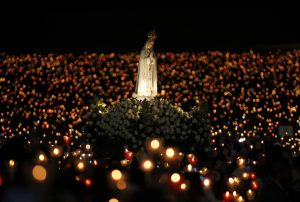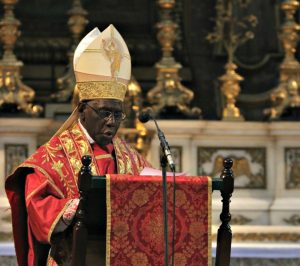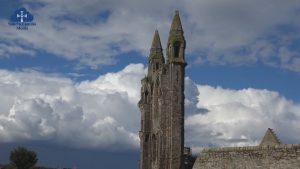 |
| What will the priest of tomorrow be like? France shows a clear indication. |
At the end of the 2009/2010 academic year (shortly before priestly ordinations) there were 918 seminarians in France. At the end of the 2016/2017 academic year, the figure was 853. This represents a drop of seven percent.
The numbers include the diocesan seminaries and all seminarians, whether French or foreigners, who study for a French diocese. Also included are the secular priestly communities of tradition (including the Society of St. Pius Xth ) and the Communauté St. Martin, which is playing an increasing role in France. The picture is therefore not entirely complete, since the Catholic orders are missing. The statistics, however, deliberately includes the world clergy.
Growth of communities of tradition and community of St. Martin
The 94 French dioceses experienced a drop in French seminarians of almost a fifth (-18.2 percent). In the case of foreign seminarians preparing for a priesthood for a French diocese, the decline was even more pronounced and almost one quarter (23.1 per cent).
On the other hand, the priestly societies of tradition show an annual increase. The number of their seminarians rose from 140 in the academic year 2009/2010 to 160 in the academic year 2016/2017. This represents an increase of 14.3 percent.
During the same period, the Priestly Society of St. Martin (Communauté St. Martin), which was founded in 1976 by Jean-François Guérin, priest of the Archbishopric of Tours, was canonically erected with the help of the Archbishop of Genoa, Giuseppe Cardinal Siri. Guérin died in 2005, who was the Superior General until 2004, and was a member of the old-rite Benedictine Abbey of Fontgombault. The mother house and the community priest's seminary are now in the former Benedictine Abbey of Evron.
The Priestly Society of St. Martin, who had 43 seminarians in France in 2010, had 98 in the past year. It was able to more than double its numbers. The increase is 128 percent.
The figures do not include the members of the Propaedeutic (Preseminary).
Clear shifts in the overall picture
The changes also mean shifts in the overall picture. In 2010, French diocesan seminarians accounted for two-thirds (66%) of all seminarians preparing for the priesthood in France. With the foreign seminarians who studied for French dioceses, their share amounted to 80 per cent. The seminarians of the priestly communities of tradition accounted for 15.3 per cent of the total number. The Communauté St. Martin had a share of 4.7 percent.
In 2017, the picture is clearly different: the French diocesan seminarists now account for only 58 percent of all seminarians who are covered. Together with the foreign seminarians for French dioceses, their share is 69.7 percent. The proportion of the priestly communities of tradition has increased to 18.8 per cent, and that of the Communauté St. Martin even to 11.5 per cent.
The proportion of diocesan seminarians are also distributed quite differently in the diocese. Eleven of the 94 dioceses had only one seminarian in the past year, five had no one. 13 dioceses had only two seminarians, 17 more only three, and another 18 dioceses between four and five seminarians. In other words, two-thirds of the French bishops do not even have a new priest every year.
Half of the diocesan seminarians are from 13 of 94 diocese - except Frejus-Toulon
More than half of all diocesan seminarians are from 13 of the 94 dioceses. Two diocese stand out: the Archdiocese of Paris and the Diocese of Frejus-Toulon. The largest number, with 70 seminarians, is the Archdiocese of Paris. At the lower end of the list, the seminarians of 42 diocese are to be counted in order to reach the number of seminarians in Paris. The archdiocese includes 3.3 per cent of the inhabitants of France, but accounts for 11.8 per cent of diocesan seminarians and 8.2 per cent of all seminarians.
The Diocese of Frejus-Toulon in Provence is a real exception. It has been headed since 2000 by the Bishop Dominique Rey. Although the Diocese is only 1.6 per cent of the population of France, the small diocese, with 42 seminarians, represents seven per cent of all diocesan seminarians and almost five per cent of all seminarians. On the whole, the seminary of Frejus-Toulon attracts most priestly vocations in proportion. At the seminary, 66 seminary participants were trained in the last academic year. In the past, Bishop Rey has promoted the establishment or founding of new orders and communities, including those with a missionary and traditional charism. The education at the diocesan seminary of Frejus-Toulon is also appreciated by priests of tradition.
27 dioceses had more seminarians in 2017 than in 2010. Not all of them signify a trend reversal, but some already. Worth mentioning was the increase, especially in the diocese of Lyon, Bayonne, Rennes, Montpellier, Meaux, Saint-Brieuc and Digne. The diocese of Bayonne is also headed by Monsignor Marc Aillet, a traditional bishop, who belongs to the Priestly Society of St. Martin.
Overall, a general shift can be observed. It leads away from the post-conciliar spirit and in a graded way towards the tradition.
Text: Giuseppe Nardi
Photo: Riposte Catholique
Trans: Tancred vekron99@hotmail.com
AMDG
Photo: Riposte Catholique
Trans: Tancred vekron99@hotmail.com
AMDG















